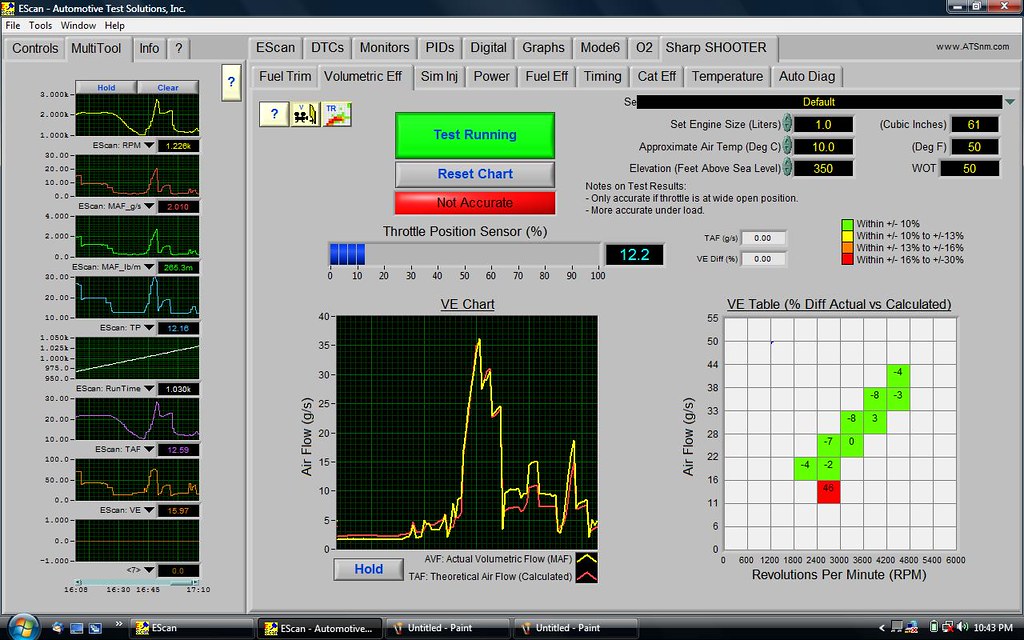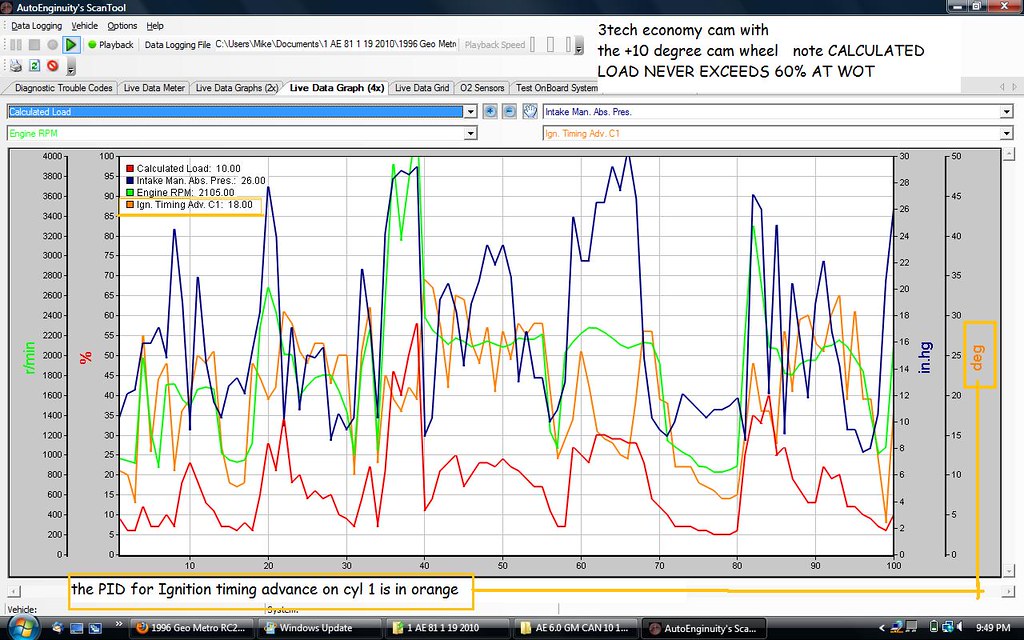 05-30-2011, 11:28 PM
05-30-2011, 11:28 PM
|
#20 (permalink)
|
|
Master EcoModder
Join Date: Jul 2009
Location: New York
Posts: 513
Thanks: 2
Thanked 101 Times in 74 Posts
|
MAP = Baro - intake vacuum
MAP = ambient Baro - intake vacuum
MAP = Manifold Absolute Pressure
MAP and
Intake vacuum
are NOT as useful as
Calculated load or Engine Load
systems that are speed density systems (that use MAP sensors) still have a flow PID
a MAF value even though it is calculated not measured -
OBD 2 generic has a MAF PID even when the system is a speed density

the PID is there , the scan tool may or may not see it , the scan tools you have referred to so far are tinker toys and should NOT be used by anyone serious about doing this kind of thing
imho
this scan tool OBD-2 Vehicle Explorer Scan Tool Browser is not a tinker toy and it costs LESS then
scan gauge 2
no
i do not own one nor do i have any thing at all to do with alex pepper
yet if i was beginning , that would be my first scan tool
Calculated Load or ENGINE LOAD can be used to determine how well or poorly your modification really works , repeat conditions and note change in Calculated Load , graphing is better
 at WOT wide open throttle at WOT wide open throttle
calculated load on an NA engine should reach 100% it never does , but it should be close - modifications that restrict flow and output will show in max available calculated load , like the image above
60% calculated load would be an UN improvement , a failure , but you do not have to guess - you can test .
Measuring intake vacuum at hot idle is another way to test flow
the higher intake vacuum is at idle , the better the engine flows , 20" on most engines is "good" test your own engine to see .
turn on hi beams , watch vacuum drop , turn on AC , watch vacuum drop -
intake vacuum is NOT an accurate way to predict LOAD OR Fuel consumption at a certain load or rpm .
Calculated Load is
|
|
|

|